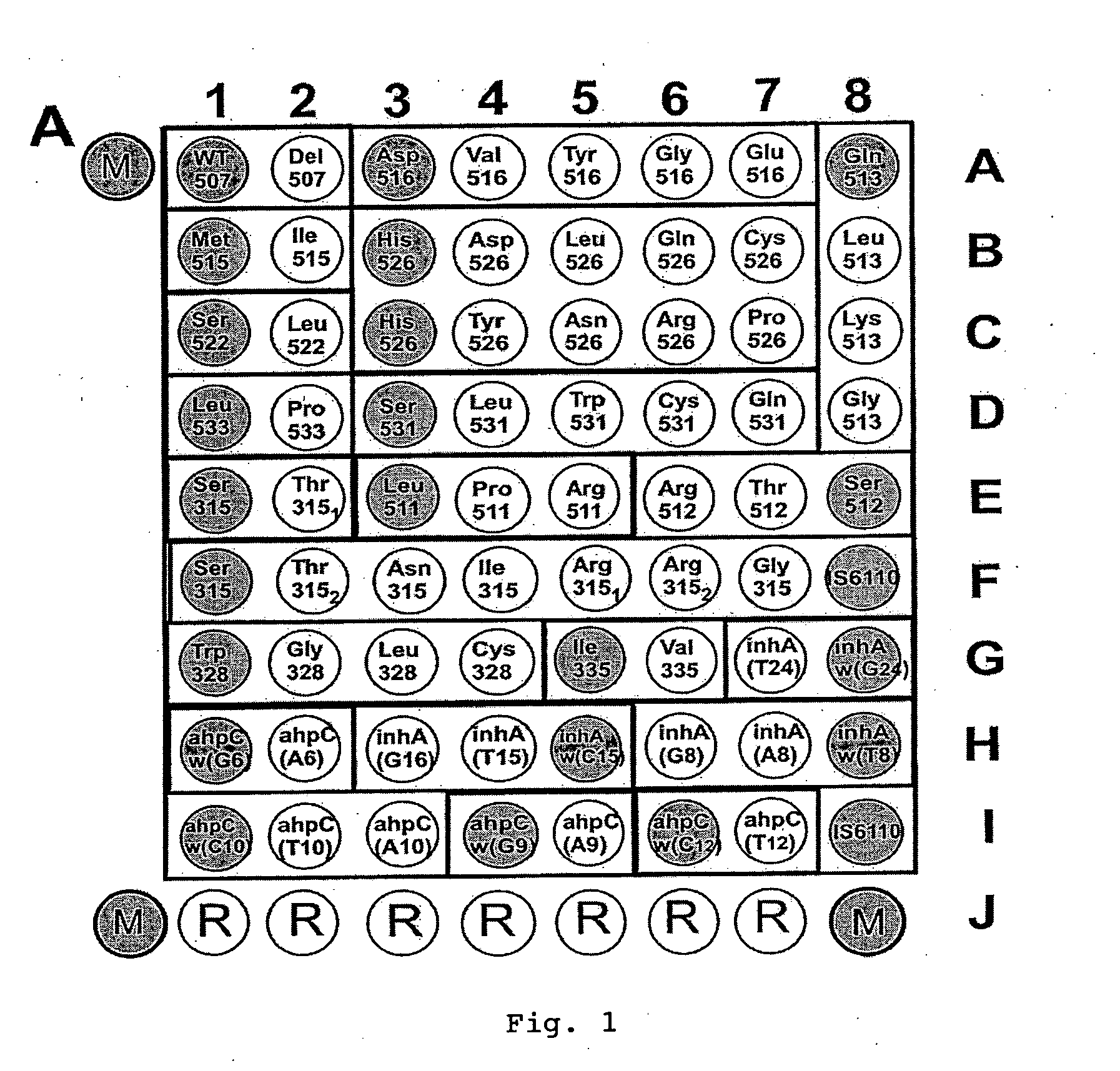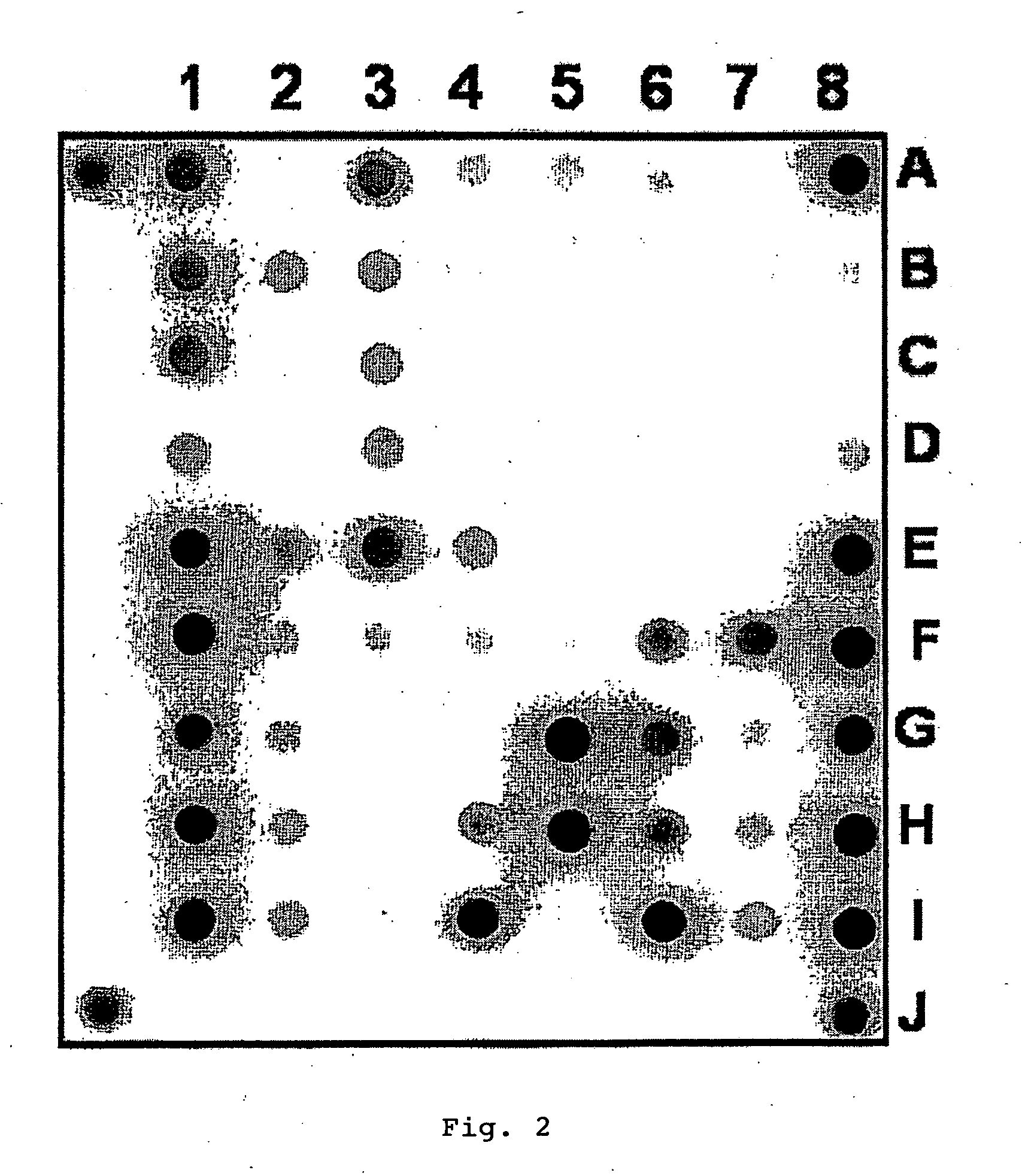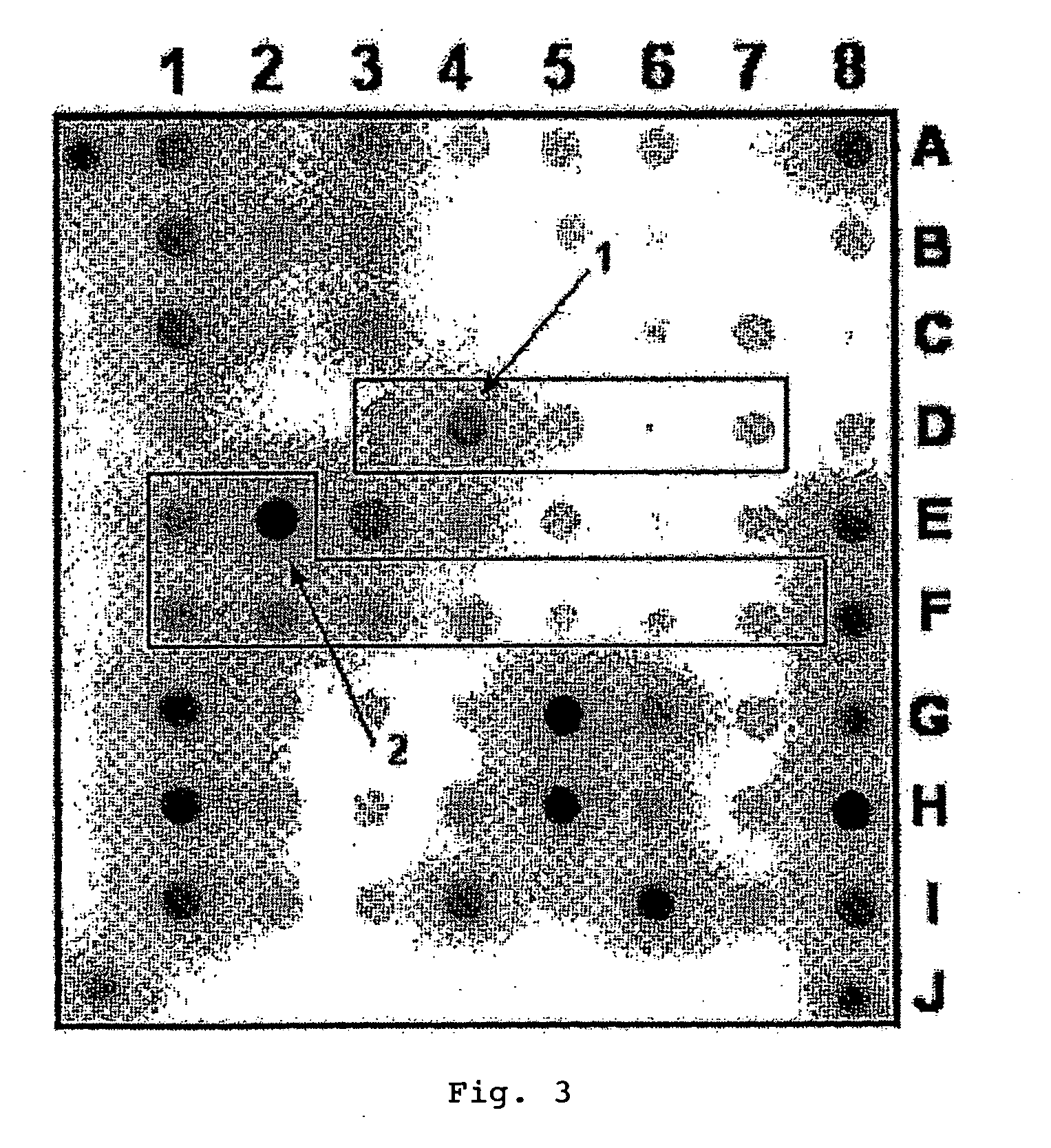Method for simultaneous detection of Mycobacterium tuberculosis complex and identification of mutations in mycobacterial DNA resulting in the resistance of microorganisms to rifampicin and isoniazid on biological microarrays, set of primers, biochip, and set of oligonucleotide probes used in the method
a technology of mycobacterium tuberculosis and mutations, applied in the field of molecular biology, microbiology, medicine, can solve the problems of high equipment cost, high labor intensity, inapplicability, etc., and achieve the effect of short time needed, low cost and high degree of automation
- Summary
- Abstract
- Description
- Claims
- Application Information
AI Technical Summary
Benefits of technology
Problems solved by technology
Method used
Image
Examples
example 1
Biochip for Detection of Mycobacterium tuberculosis Complex and for Evaluation of the Sensitivity of Strains to Rifampicin and Isoniazid
[0092]1. Oligonucleotides for immobilization on biochip and primers for amplification were synthesized on automatic synthesizer 394 DNA / RNA synthesizer (Applied Biosystems, USA) and contained spacer with free amino group 3′-Amino-Modifier C7 CPG 500 (Glen Research, USA) for further immobilization in gel or 5′-Amino-Modifier C6 (Glen Research, USA) for attachment of fluorescent dye, respectively. Attachment of indodicarbocyanine fluorescent dye (“Biochip-IMB”, Russia) was carried out according to the recommendations of manufacturer. Biochips were manufactured according to the procedure described earlier (Rubina A Y, Pan'kov S V, Dementieva E I et al. Hydrogel drop microchips with immobilized DNA: properties and methods for large-scale production. Anal Biochem 2004; 325: 92-106). Biochips contained semispherical pads with diameter of 100 μm, spaced at...
example 2
Treatment of Clinical Sample
[0106]1. Clinical sample (sputum, exudation, wash-out, bronchioalveolar lavage) was mixed in 1:1 (v / v) ratio with freshly prepared 0.5% solution of N-acetyl-L-cysteine (NALC) in 2% NaOH. Sample was rigorously stirred by Vortex and kept at room temperature for 20 min. Phosphate buffer saline pH 6.8 was added to the sample in ratio 1:5 (v / v) and mixture was centrifuged for 30 min at 3,000 rpm. When cerebrospinal fluid was used the preliminary centrifugation for 10 min at 10,000 rpm was carried out. For blood analysis lymphocyte fraction was preliminarily isolated according common method with Ficoll. Subsequent treatment of all samples was carried out identically.
2. Precipitated pads were suspended in 1.5 ml of TE buffer (10 mM Tris-HCl, 1 mM EDTA), pH 8.0, and centrifuged at 3,000 rpm for 30 min. The washing procedure was repeated one more time.
3. To the pellet obtained 30 μl of TE buffer, pH 8.0, containing 1% (v / v) Triton X-100 was added and sample was ke...
example 3
Amplification of Fragments of IS6110 Mobile Element, rpoB, katG, inhA, ahpC Genes; Preparation of Single-Stranded Fluorescently Labeled Fragments by the Method of Multiplex PCR
[0107]On the first stage the multiplex amplification of fragments of rpoB (212 b.p.), katG (166 b.p.), inhA (133 b.p.), ahpC (126 b.p.) genes and of IS6110 mobile element (309 b.p) was carried out.
[0108]Into 25 μl of PCR-mixture the 3 μl of sample obtained in paragraph 4 of Example 2 were added.
[0109]Composition of PCR-mixture:[0110]1×PCR-buffer: 10 mM KCl, 10 mM Tris-HCl (pH 8.3) (Sileks, Russia);[0111]1.5 mM MgCl2 [0112]200 μM of each of dATP, dCTP, dGTP, dUTP (Sileks)[0113]The mixture of primers (sequences are listed in Table 2) in following concentration: p105f, p293r, katG_f, katG_r1, IS_f, IS_r1; InhA_f, InhA_r1, ahpc_f, ahpC_r1—100 nM.[0114]5 U of thermostable Taq DNA-polymerase (Sileks)[0115]0.5 U of uracyl-DNA-glycosylase (Sileks)
[0116]Amplification was carried out on programmable thermostat MiniCycle...
PUM
| Property | Measurement | Unit |
|---|---|---|
| temperatures | aaaaa | aaaaa |
| melting temperatures | aaaaa | aaaaa |
| diameter | aaaaa | aaaaa |
Abstract
Description
Claims
Application Information
 Login to View More
Login to View More - R&D
- Intellectual Property
- Life Sciences
- Materials
- Tech Scout
- Unparalleled Data Quality
- Higher Quality Content
- 60% Fewer Hallucinations
Browse by: Latest US Patents, China's latest patents, Technical Efficacy Thesaurus, Application Domain, Technology Topic, Popular Technical Reports.
© 2025 PatSnap. All rights reserved.Legal|Privacy policy|Modern Slavery Act Transparency Statement|Sitemap|About US| Contact US: help@patsnap.com



